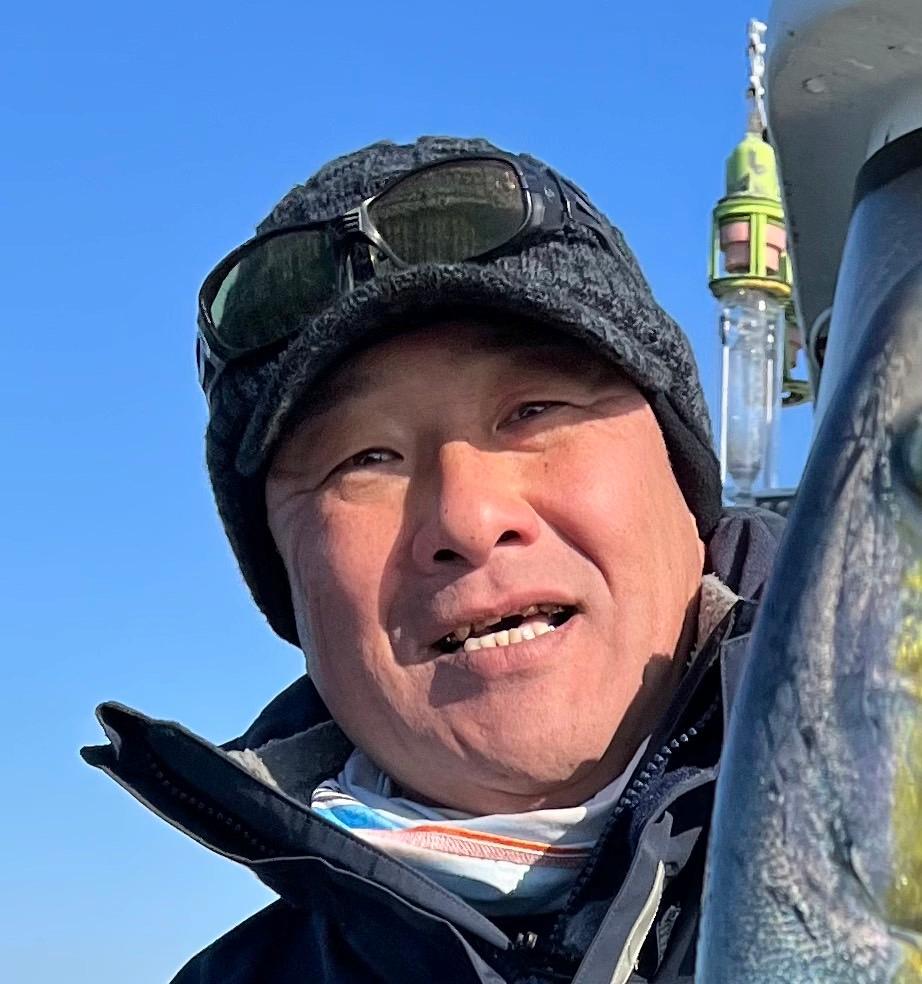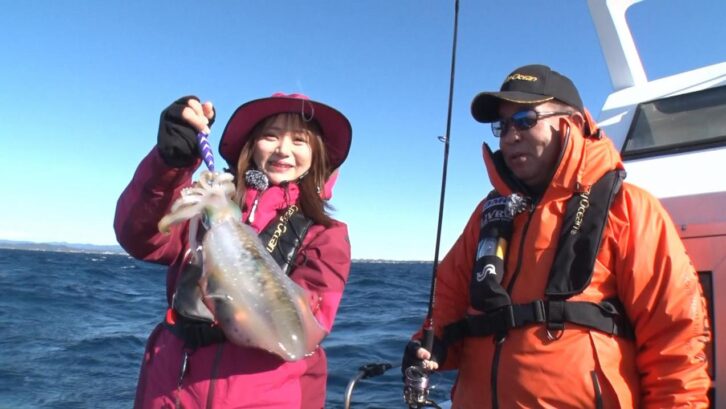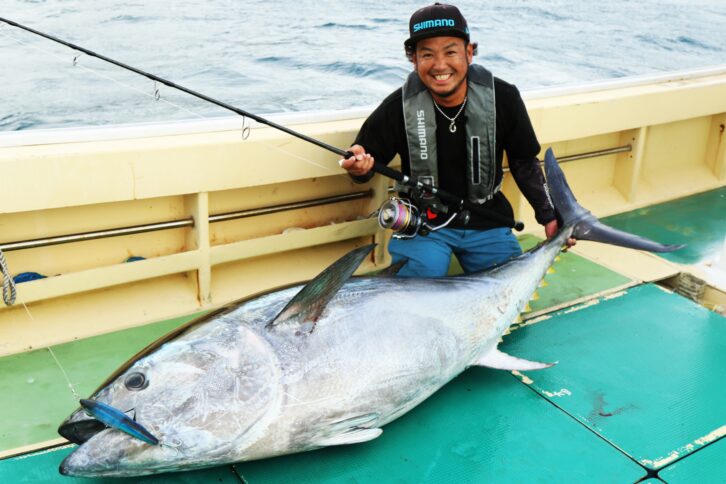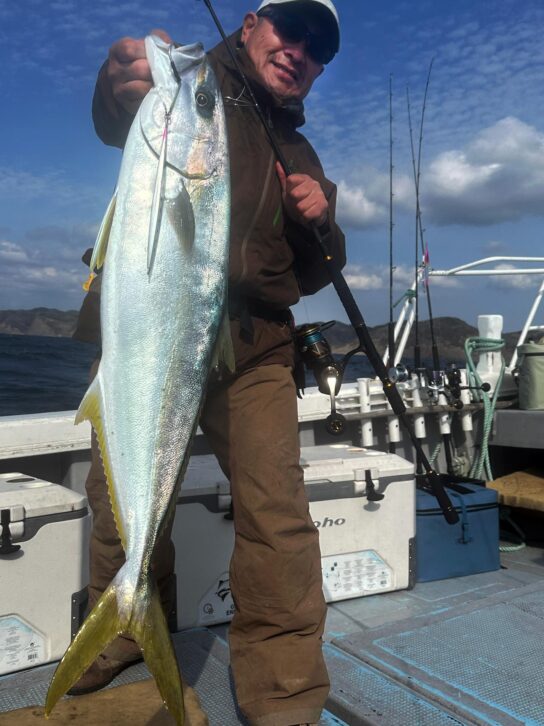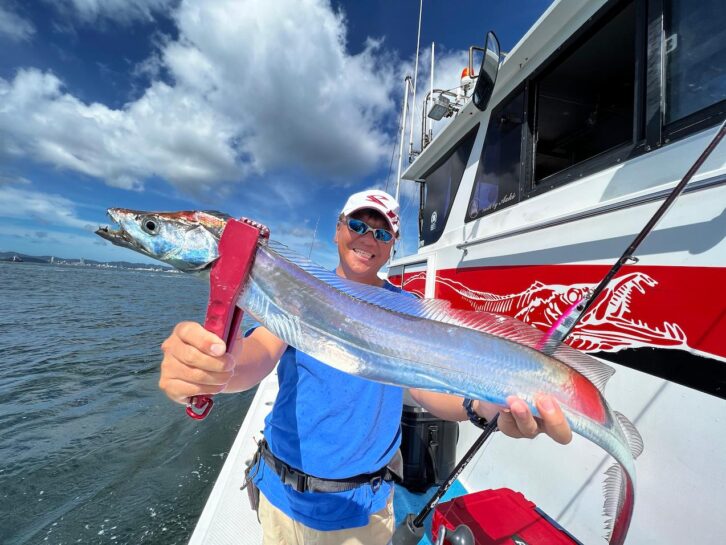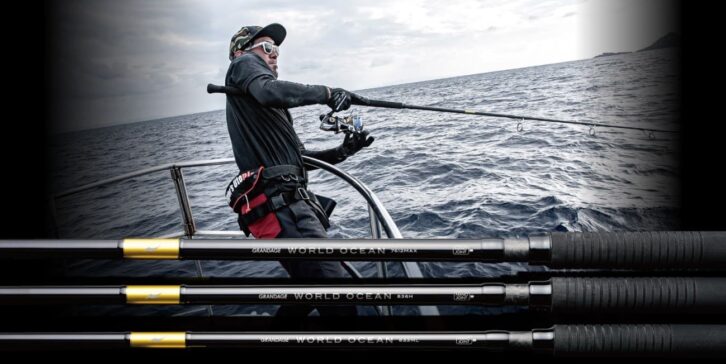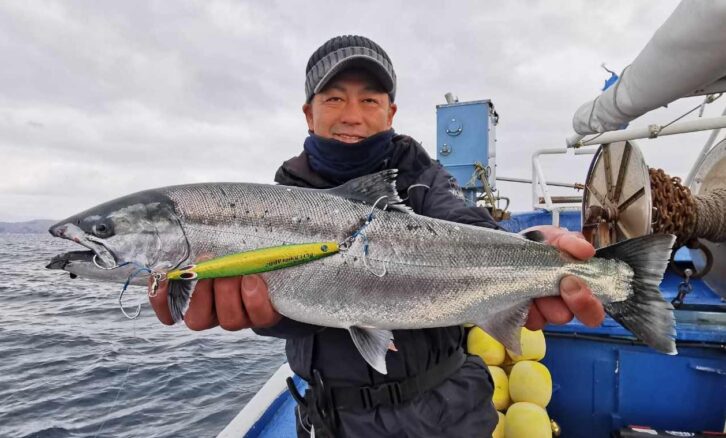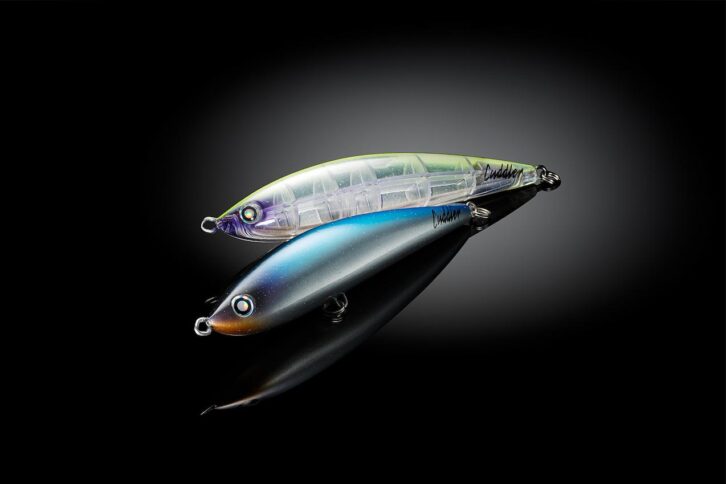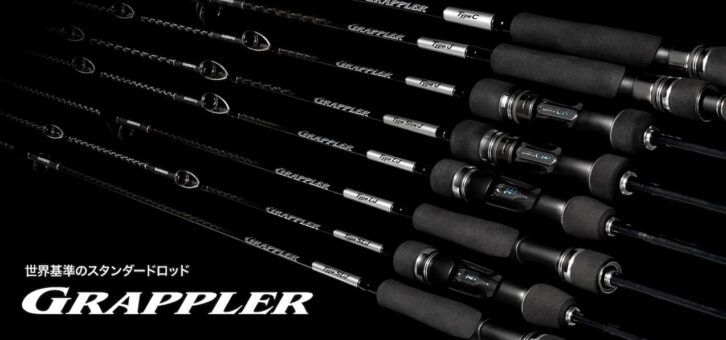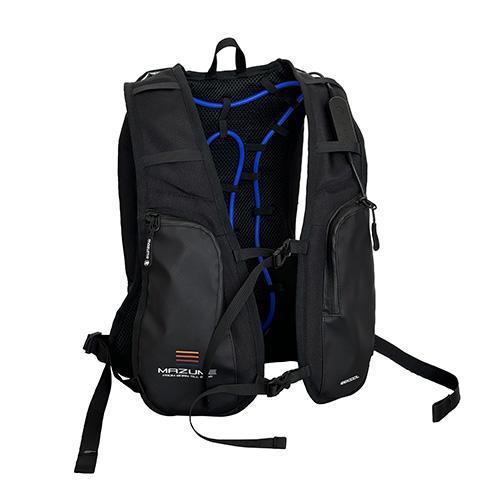Offshore World vol.18
Offshore Actual Fishing. Aiming for bluefish in my hometown sea, Tango Peninsula, Sea of Japan. Jigging for yellowtail and sunfish.
The Sea of Japan, the field where I learned offshore game fishing. 30 years ago, there was no style of targeting bluefish with a metal jig, and I was still pioneering. I was on a bait fishing boat with my master Seiichi Nagai every week and kept trying to get the captain to understand jigging. In this article, we would like to introduce the offshore game from a time when the term "offshore game" had not yet penetrated the Sea of Japan, as well as the current popularity of the field.
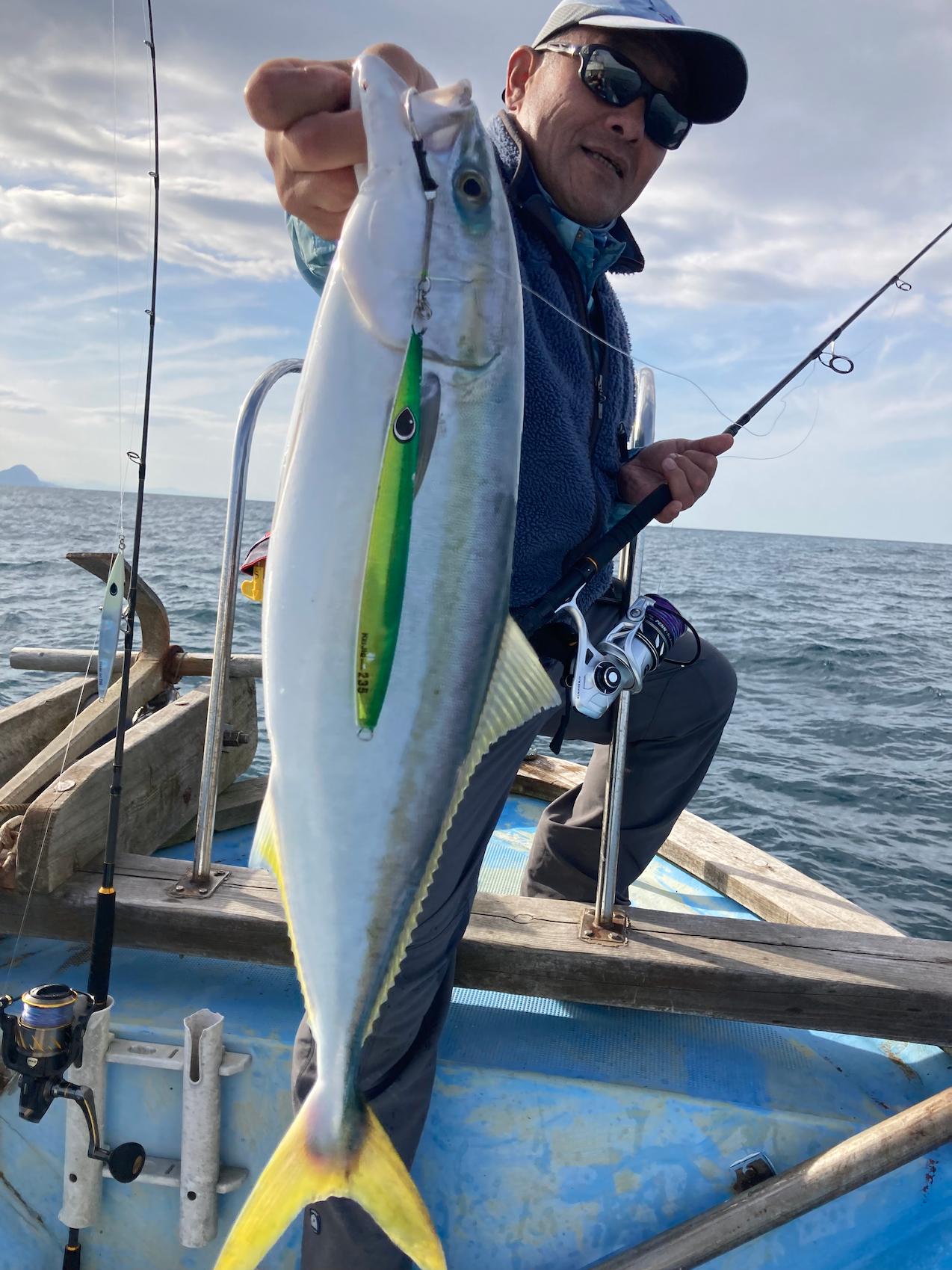
INDEX
Set sail for the Tango Peninsula in the Sea of Japan.
From Kanagawa Prefecture, we drove through the New Tomei Expressway and the Ise Bay Expressway, then took the Keiji Bypass and the Kyoto Longitudinal Expressway to Maizuru. This alone makes me feel that access has become considerably more convenient in the 30 years that have passed. Once I look back on my student days, I am tempted to tell old stories and history, but my 27-year-old eldest son tells me that this is the last thing I should talk about at the drinking table, so I would like to omit everything, saying, “It has become more convenient. If I write out the old stories, they would not fit into the specified number of words. I would like to tell you a real story only about this fishing trip.
The fishing trip took place in early December 2023. I met up with my fellow fishermen at a convenience store near Maizuru Port. We headed for the waters off Kyogamisaki (Shiraishi Reef) and Kabashima Island. The boat was not a passenger boat as usual, but a pleasure boat, albeit a Japanese-style boat. The boat is owned by a fellow student of the judo club, and Umehara, who goes offshore every weekend to target bluefin tuna, is at the helm. The boat’s co-pilot is also a fellow judo club member. They lived together in the judo club dormitory during their college days and competed in national tournaments every year. As they grew older, their hobbies brought them together again, and this time it was a real fishing event. There were five of us this time, including seniors and juniors. They are all passionate about fishing for bluefish. As a fisherman by profession, I couldn’t be happier. My friends from school are fishing for bluefish after 30 years. I want to fish for sunfish,” he said, “and I want to know how to catch yellowtail. I was elated to hear these words from a fellow judo player.
The boat was anchored at Nishi-Maizuru, and we headed there. It was a southerly wind, which is rare in the Sea of Japan in winter, and the sea was calm. The Sea of Japan in winter has a strong image of northerly winds blowing for days at a time, making the seas rough. Miracles do happen, and I was more pleased than anyone else with the conditions. With the words, “It’s a miracle,” the five of us boarded the boat and set sail.

This time, instead of a pleasure fishing boat, they enjoyed themselves on a pleasure boat with their judo buddies. The photo shows Umehara, one of the junior members of the Kyoto Gakuen University Judo Club, and the boat anchorage in Nishi-Maizuru where Umehara’s boat is moored.
How to target mainly bluefish by jigging
Run from the Nishi-Maizuru port anchorage. You cannot enter Shiraishi (Cape Kyogamisaki) until 10:00. This has been the same rule for 30 years. Since that time, we had been adjusting our time at other points before entering Shiraishi. We headed for Crown Island. We arrive at the point. No one had entered. According to our prior information, the yellowtails were doing well on the Shiraishi reef, so we expected that the other boats would not make any flashy moves. We started dropping jigs just to get used to the fishing.
The depth was 50m, and we positioned the boat to hit the bait reaction around the rapids. Captain Umehara, who knew the spot very well, got off to a good start with a blue grouper. He hit again with a Gummy 160g. Captain Umehara said, “It’s a bluefish. A whitebait came up. In Kansai area, they call the size of Walasa “Mejiro”. Captain Umehara is a serial fisherman. He was a member of the Hiramatsu Fishing Club when he was in the Judo Club, and often slipped out of the dormitory to go fishing when practice was off or after practice.
He had a string of catches of root fish and walleye. The good times did not end there, and just before 10:00 a.m., he landed a series of Hiramasa. The other judo anglers, including myself, didn’t even get a bite. I took my hat off to him for catching two sunfish in a row, and he was using Gummy fat 180g headglow well to make them bite on the bottom. I couldn’t get over this timing. However, I decided to move the point with my hair back on the “Hiramasa” as the 10:00 a.m. Shiraishi Reef ban limiting.
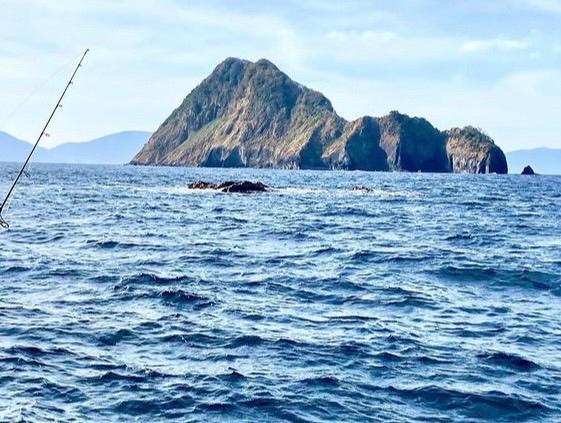
First thing in the morning, I entered Crown Island. The waters off Maizuru were abuzz with bluefish, but no one was fishing on Crown Island.

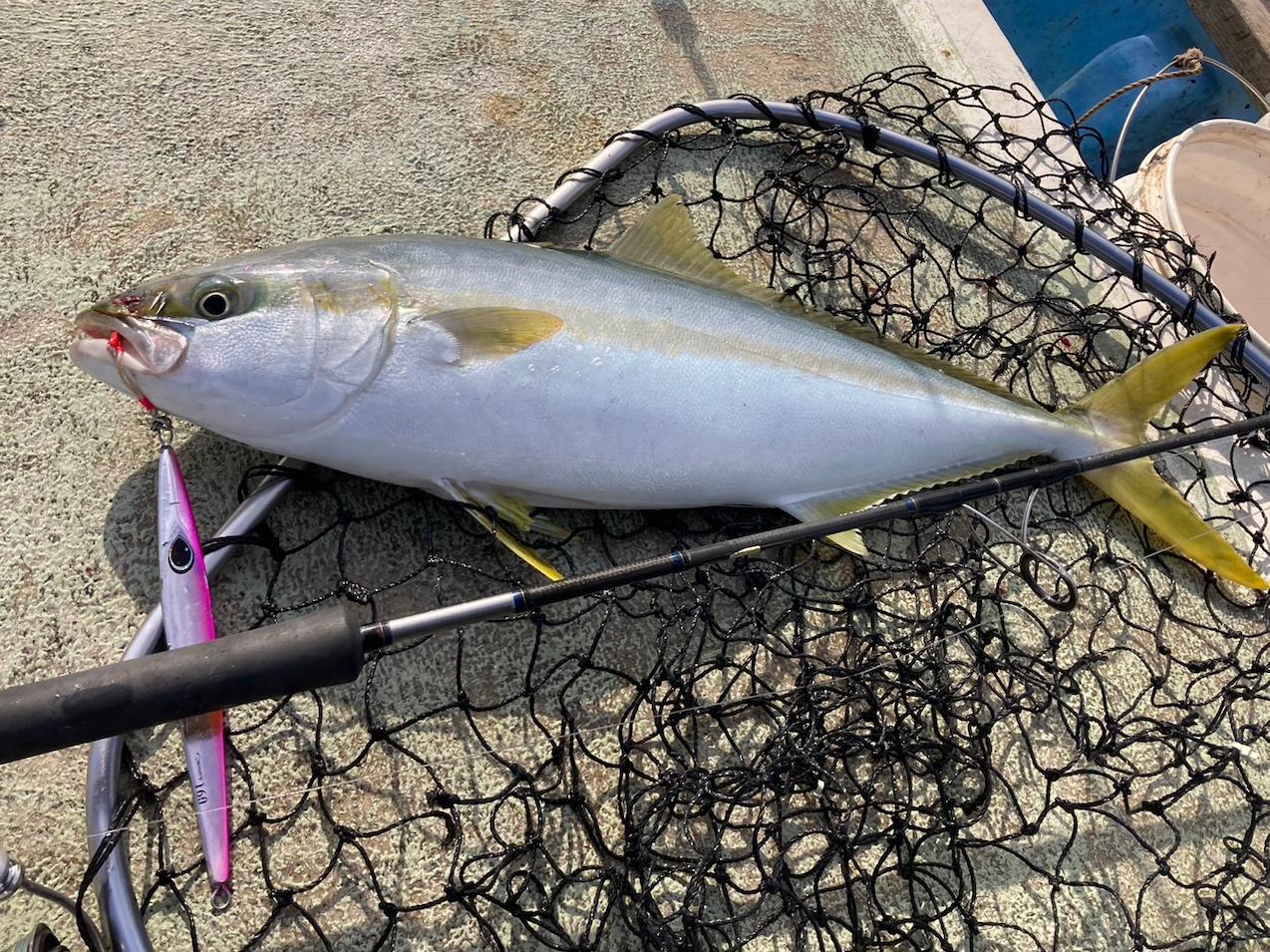
Captain Umehara got a kingfish followed by a sunfish. The fishing doesn’t stop. Hiramatsu is getting impatient.
The previous day’s fishing results on the Shiraishi reef were all over SNS, and all the boathouses were excited about it: yellowtails over 10 kg and even a huge sunfish. Such information made me excited, thinking that I had a chance to catch them too. For better or worse, the information society can move people’s hearts in this way. As a participant from a rural area, I was completely overwhelmed. At Shiraishi Reef off Cape Kyogamisaki, there were more than 40 pleasure boats and fishing boats. We entered the reef late and started jigging when we found a reaction. The reaction on the bottom and the reaction in the middle layer indicated that Spanish mackerel were migrating, and we had to choose between the two to enjoy jigging.
Hiramatsu-style mast pattern
When we looked at the current of a large pleasure fishing boat, there were 10 anglers on each side of the boat, and over 20 anglers were targeting bluefish. When the tamen moved, you knew it was a hit. The announcements also told us the target layer. I guessed that the jig’s position around the bottom was the key to getting a hit. Waiting for the migration, the boat moves up again after passing through the rapids, and the rapids are flowing again. There was no big movement, so we could see that they were waiting for the migration. Our boat was flowing through the gap between such large boats.
I decided to go on the offensive instead of waiting for the fish to migrate. I had been beaten to a pulp by Captain Umehara at Kappashima, and I was in a hurry. I asked myself to stay calm. I read that the key to success was how to efficiently target the bottom reaction.
My aim was right on target. The boat was moving at 1.7 knots. I put the jig in on the tide and let the jig follow the tide along the bottom to attract the fish. I used KEI-JIG SHARP 235g to aim with “line action” and Gummy fat 200g to search with “point action”. KEI-JIG SHARP is more efficient for vertical work. Although it is different from the style of attack on a large boat, I wanted to probe agilely with KEI-JIG SHARP when approaching from a speedy rise to the bottom.
In the “fat,” the style was to keep the fish in range along the undulations of the bottom to get them to bite. The jig is not waiting for the fish to migrate, but rather, it is a style of introducing the jig to the destination of the migration to lure the fish out. We searched for the best pattern.
Then, I got a bite on KEI-JIG SHARP. The first bite was a yellowtail size fish on the KEI-JIG SHARP that arrived at the bottom. We were happy that it was a hit at a time when other boats were not catching so many fish. The fat yellowtail spit out a lot of sardines. We could tell that there was a considerable amount of bait. This one fish made me feel at home.
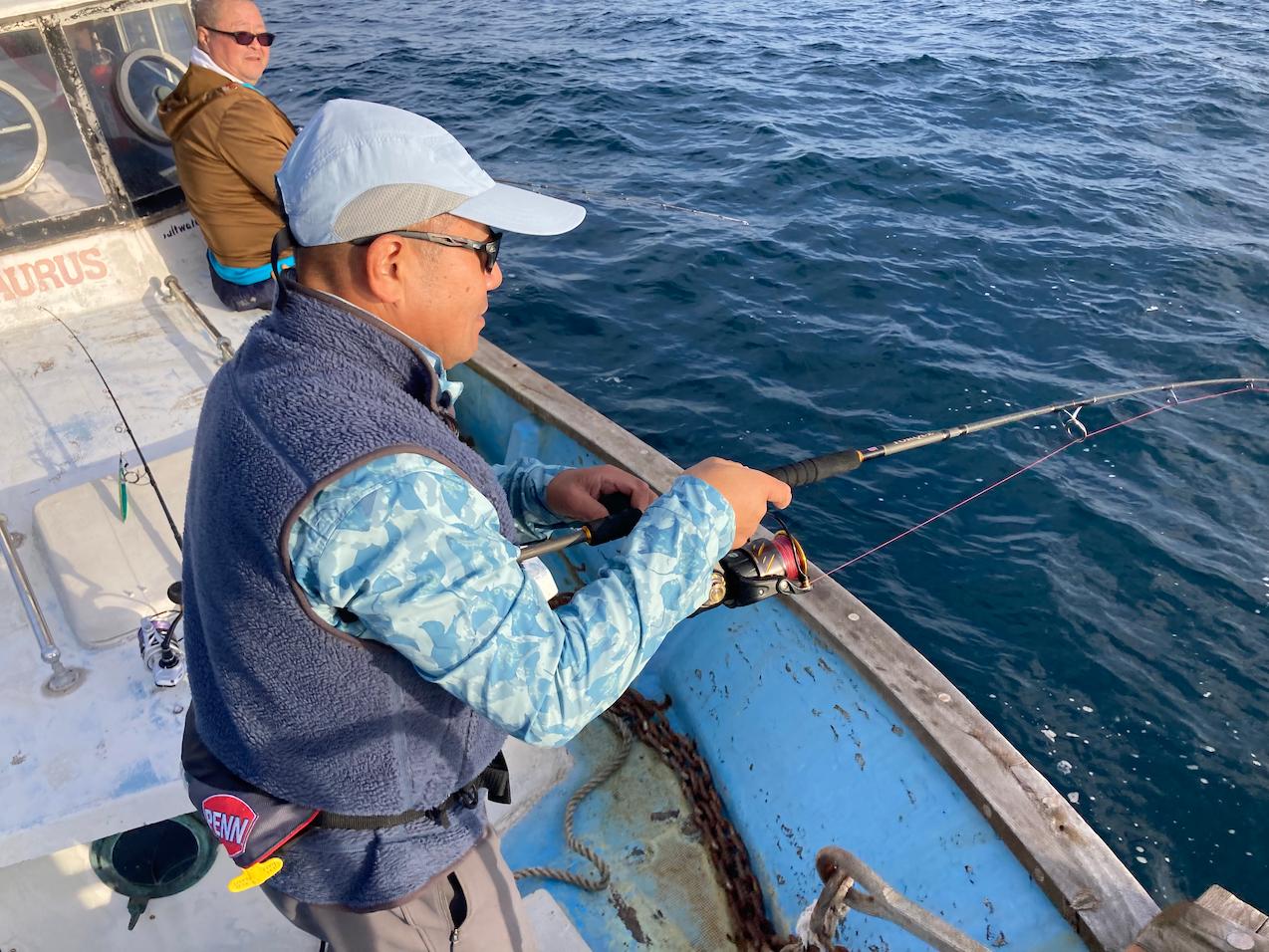

I am the size of a fat yellowtail. Captain Umehara is very considerate and says, “It’s a whitebait,” but…. But I am happy with this one because I almost read the field.
Next, I narrowed down my sights to sunfish. Since this was an area where sunfish were mixed in, we searched for them with sharp movements. However, the tide slowed down at 12:00 p.m., and all the boats were calm. My fellow judo club members were fishing with blades on their jigs and catching Spanish mackerel in an interesting way. I stubbornly continued to trace the bottom. This is a must pattern. Two hits in a row, though they were the size of whitebait. I enjoyed the fun of having fish use their mouths depending on how I approached them.
After that, my judo club mates also hooked a few more whitebait and Spanish mackerel. As time went by, the number of boats gradually decreased from more than 40. Would there really be a good time to fish in the evening? Captain Umehara said, “Let’s stick it out this day, as it is a pleasure boat only. Spanish mackerel were hitting well in the middle layer. We kept on fishing until almost sunset, but we could not catch any bigger than whitebait, and our rods were off. We had to return to port.
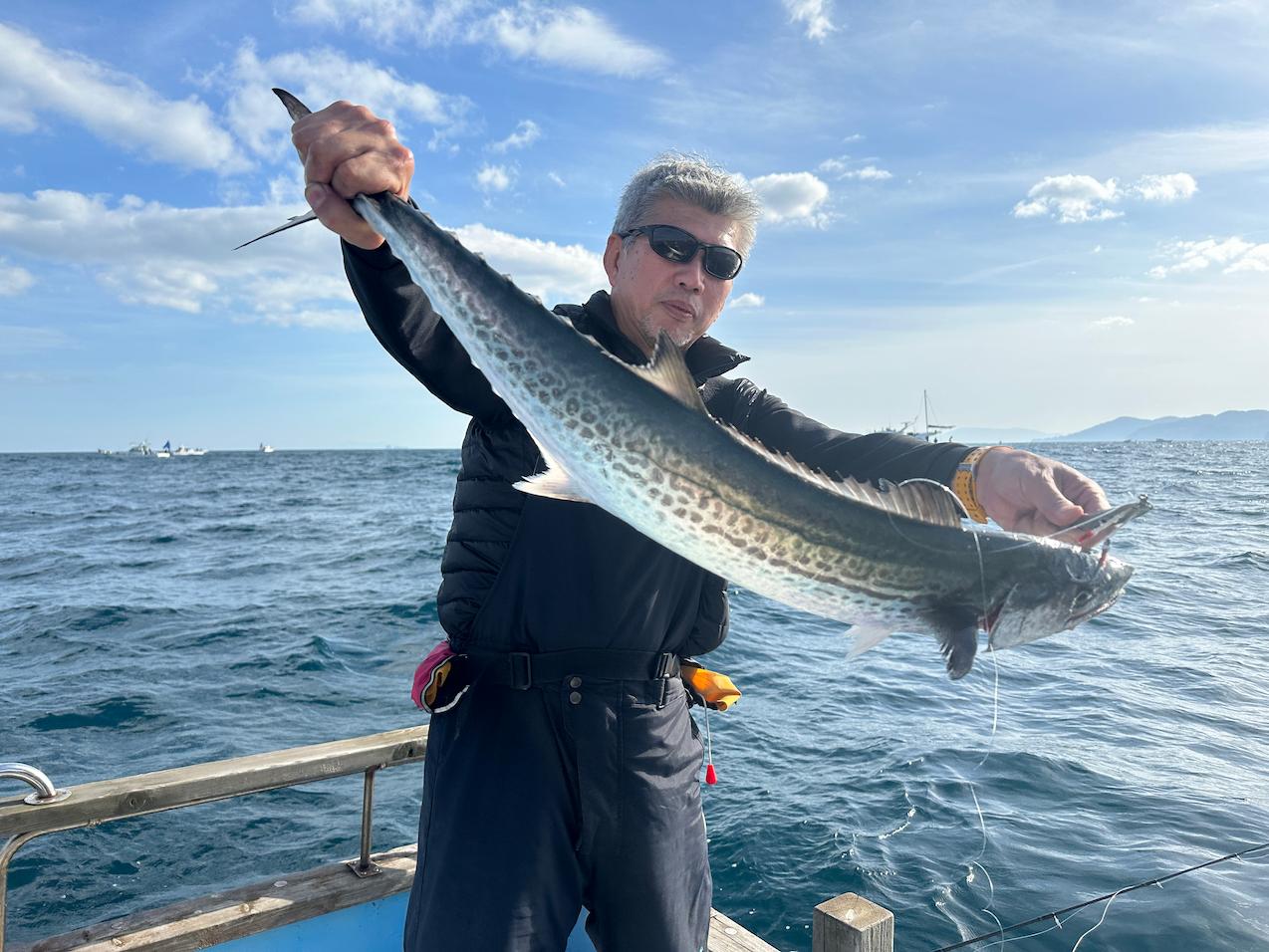
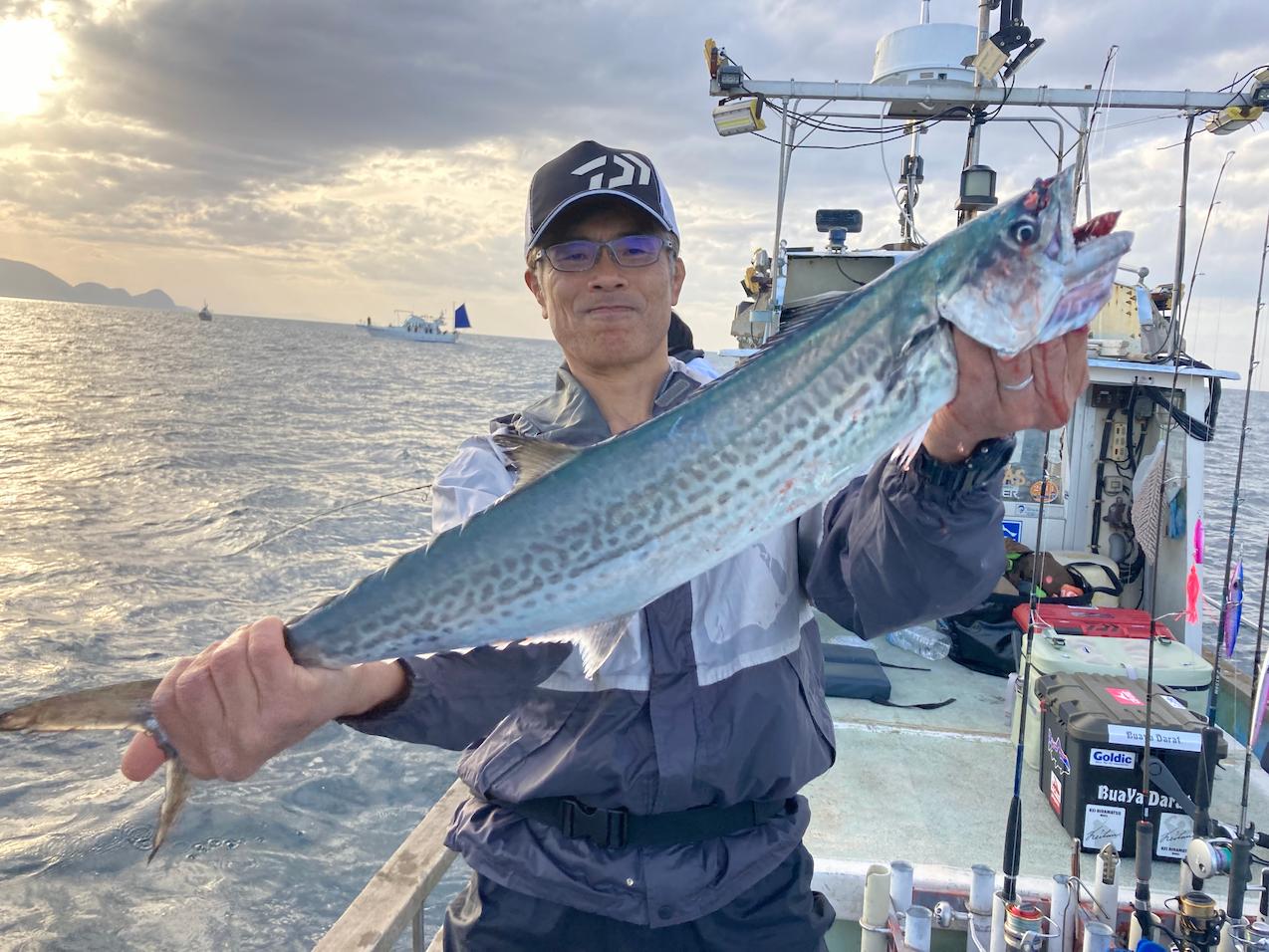
Spanish mackerel also showed up on jigs and blade jigs, and the members enjoyed jigging on the Shiraishi Reef in the Sea of Japan at Kyotango.
We enjoyed jigging at Kyotango Japan Sea Shiraishi Reef for the first time in 30 years. As I mentioned earlier, we kept our talk about the old days to a minimum, but I was very happy to see that my hometown field, where I had been jigging with nylon line since the days when I still used to chew on it, was so much more exciting than ever before. There was a time when people used to say, “They won’t eat that kind of fish. I have continued to visit the Tango Peninsula, watching the back of my mentor, who started pioneering the area as a lure field, hoping to fill up the boats. Nowadays, there are many fishing boats and it is so popular that reservations cannot be taken. We walked back to the harbor, looking at the mouth of the Yura River and reminiscing about the old days. The sea that Master drew at that time had been created there. It was a fishing trip that brought me joy as I remembered that I had been working together with him, believing that I could make the sea area like that, even if only a little. Next time, I would like to focus on the good type of sunfish that I could not catch this time.

I persisted in search of sunfish until nearly sunset, but I was unable to encounter any that day. However, I am glad to know that jigging in this area is now thriving, as I had pioneered it a long time ago. I would definitely like to catch some good fish next time.


Jigging tackle
Rod: PENN Torque PHK-63ML (proto-dip)
PENN Torque PHK-63MH
Reel: PENN Authority 6500HS
PENN Slammer DX 6500
Line & Leader: Sunline X8 Full Contact #4 & Tsunagito #12, #14
Lure: K-FLAT Gummy 200g, 220g
Gummy-fat 180g, 200g,, 235g
K-FLAT KEI Jig 200g, 235g
KEI Jig Sharp 200g,235g
Hooks & Parts: Owner Hyper Wire #7, Solid Ring 6.5mm
JS-39 Blue Chaser 11/0, 9/0
Polarized glasses: zeal optics vero model
Tackle inquiry
Goldic TEL:046-252-6010 (closed on Tuesdays)
HP address https://www.goldic.net/
Kei Hiramatsu Official Blog [Ibusa Diary]
https://kei-hiramatsu.com/
Kei Hiramatsu facebook
https://www.facebook.com/hiramatsu.kei.1
Twitter account
@keitanhiramatsu
(Muttering)
YouTube Kei Hiramatsu Channel
Account:keisabani


